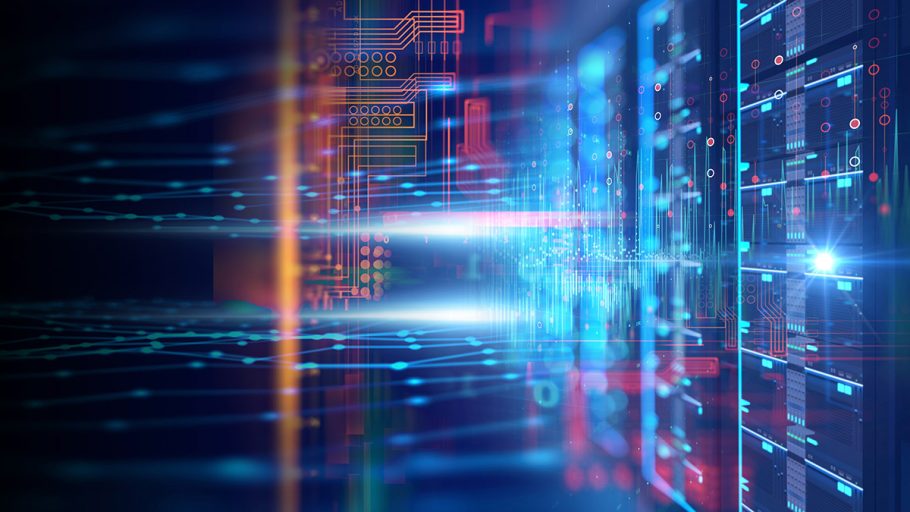One of the major challenges the data center industry is facing today is the need to run at five to ten times the current energy capacity to keep up with the adoption of AI. That means we as technology leaders need to ask ourselves how many existing data centers can be upgraded to accommodate these increased capacity and power density needs—and what exactly we need to do so.
Generative AI (GenAI) models are increasing the demand for high-performance computing power and storage capabilities because they require massive amounts of data and computational resources to train the models and generate content according to user input. However, even more importantly, we need to ensure the protection of data and generated content from unauthorized access, which means adopting robust security measures like encryption, access controls, and monitoring systems to maintain data integrity and confidentiality.
The rapid growth of artificial intelligence and other modern technologies means that data centers need to scale up their infrastructure, while driving innovation in both new designs and technologies.
Meeting GenAI Deployment Demand
AI is a significant driving force for digital transformation. Technologies like Internet of Things, industrial automation, augmented reality, virtual reality, and other new applications need lower latency and more data capacity, reliability, computing power, and proximity to the end user.
As AI evolves, it will create a surge in data consumption and improve efficiency in computing, especially where virtual worlds like the Metaverse is concerned. Likewise, AI workloads will necessitate modernizing the workforce across the industry and shifting data centers toward off-premises colocation and edge data centers within a hybrid infrastructure architecture.
While the industry already supports innumerable high-performance computing deployments, data center companies are listening to customers and taking steps to provide standardized configurations and ultra-high-power densities in order to help achieve optimal performance in the age of AI. Therefore, customers are increasingly relying on data center companies to supply high-density colocation services that can support the massive per-rack kW demands that the next generation of AI accelerators require.

If we go by numbers, International Data Corporation (IDC) estimates that the global AI market, including software, hardware, and services, will post a CAGR of 18.6 percent in the 2022–2026 period to reach the 900 billion USD mark in 2026. It also projectsworldwide revenue for AI at 154 billion USD in 2023, with a potential to cross 300 billion USD by 2026, which represents a 27 percent CAGR—more than four times the growth rate of total IT spending over the same period.
The amount of private investment in AI in 2022 was 18 times greater than that of 2013. The number of companies that adopted AI in 2022 has more than doubled since 2017. That’s the kind of rapid growth AI is witnessing.
With adequate investments in AI capabilities and resources, AI can be deployed in data centers and networks to deliver a valuable return on investment and create a significant impact on key technologies being deployed today, including cloud services and 5G mobile network.
Evolving Data Center Hardware And Infrastructure
To meet the demand generated by GenAI, data centers are evolving and adapting their design, power infrastructure, and cooling equipment in various unique ways in order to provide the necessary vast computing resources and storage.
For example, if the speed of the network connecting servers is slow, it will cause training bottlenecks. Although most strategies for improving network speed now involve data center hardware, developers are investigating other options, including programmable switches that can route data in different directions. This approach will accelerate the need to resynchronize input weights among multiple servers whenever model parameters are updated.
By using high-performance computing (HPC) clusters—which consist of multiple servers connected through high-speed networks—and enabling parallel processing and faster training times, data centers can accommodate AI applications and workloads by accelerating complex calculations. In particular, data centers can host specialized hardware like graphics processing units (GPUs) that enhance graphical interface and run high-end tasks and tensor processing units (TPUS), which are custom-built processors that run a project made on a specific framework.
Likewise, power supply constraints continue to be a challenge, as AI applications consume significant power and these high-performance processors need more power than traditional data center processors. In turn, more power means more modifications for cooling technology in order to reduce downtime. Typically liquid cooling is preferred for high-performance chips due to the limitations of legacy air-cooled chillers.

Where To Grow From Here
Tirias Research forecasts that generative AI data center server infrastructure in addition to operating costs will surpass a 76 billion USD market by 2028—a level of growth that will impact the business models of services (like search, content creation, and business automation) that use GenAI.
It would be apt to conclude that technology enhancements alone will not overcome the processing challenges represented by GenAI adoption. To move beyond these challenges, we will need changes to the way in which processing is performed, improvements in model optimization (without a significant loss of accuracy), and new business modelsto cover the costs of what will still be required to be processed in the cloud.
AI adoption across industries is going to increase demand for datacenter operators, on top of other factors that are driving global demand. We at CtrlS Datacenters have already invested significant time and resources to make our data centers ready for AI adoption, and we plan to continue doing so. In addition to developing 21 data centers (five of which are to be operational in 2023) and planned to be scaling up power capacity from existing 225MW to over 1000MW, we are carefully planning how to adapt our infrastructure and make sure we can keep offering our clients the best services.
ABOUT THE AUTHOR
Royce Thomas is President and Chief Business Officer of CtrlS Datacenters and an industry veteran with strong global sales leadership experience and expertise across colocation, cloud technology, and telecommunications industries.
With over three decades of rich and versatile digital infrastructure experience, Thomas has core strengths in global account management, strategic planning. and channel development in addition to other critical functions and areas that enable organizations to reach next levels of global growth.
He joined CtrlS Datacenters in May 2022 in his current role, where he is responsible for sales, marketing, and working closely with the board and leadership team to drive the company’s growth strategy into new global markets. Previously, he worked at Equinix where he was Senior Vice President of Strategic Alliances and Global Account Management for 11 years. Prior to that, he held multiple senior sales leadership roles across enterprise, cable, ISP, CDN, and hyperscale segments at Level 3 Communications and served at Sprint in several sales management functions.



